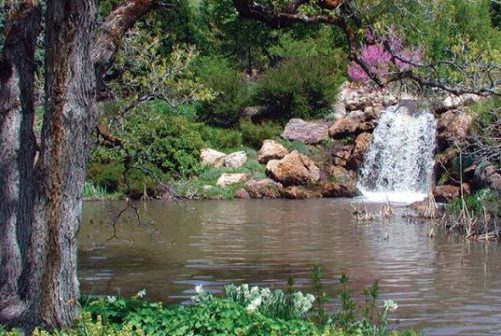
By Maria Archibald, Sustainability Office
Sarah Jack Hinners derives her passion for the environment from her childhood and an upbringing that nurtured her connection to the natural world.

In her upcoming Global Change & Sustainability Center (GCSC) seminar, “Campus as a Living Lab: Embedded Research for Sustainability Innovation in the Built Environment,” Dr. Hinners will explore the intersection of water, plants, and urban landscapes, and discuss the university’s role in building a more sustainable future. Hinners is a research assistant professor in the University of Utah’s Department of City & Metropolitan Planning, director of the Center for Ecological Planning and Design, and an associate director of the GCSC.
“I grew up in the middle of nowhere, in the woods, where the nearest pavement was four miles away, and so access to nature is pretty important for me,” Hinners says. Motivated to learn more about the environment, she pursued a BA in Geography and Environmental Studies from McGill University and a PhD in Ecology and Evolutionary Biology from the University of Colorado Boulder.
At the U, Hinners applies her scientific expertise to the field of urban ecology and planning. “I think that people have an innate connection to nature and I am concerned that we build cities that don’t provide that for people,” she says.
Hinners uses her science background to study the ecological, economic, and social roles of nature in cities, and to determine how we can design cities that connect people to nature and interact sustainably with natural resources, particularly with water. Water is precious in dry Utah, and much of Hinners’ work explores green infrastructure approaches that can make better use of this lifegiving resource.
“Our stormwater tends to be a wasted resource for the most part in our cities,” she explains. “Most of it doesn’t get to the plants growing in our urban landscapes. It goes into storm drains, and then it ends up eroding and polluting our creeks.”
Universities are vital to a sustainable future, Hinners says. She facilitates stewardship of campus landscapes and encourages the university to become a leader in sustainability innovation. “We think about campus, really, as an academic institution,” she explains. “It’s a place where we go and learn, but it’s also a physical place. And it’s effectively a good-sized town.”
All the functions of a normal town or city—from facilities and operations to campus planning and security—take place at the University of Utah.
“Our research and learning and educational efforts are more…outward focused. We don’t focus them on the actual functioning of the campus,” she explains. “When you think about it, we have amazing intellectual powerhouses at our universities. There’s a tremendous amount of opportunity for those smart people to be applying their thinking and their research a lot more directly and a lot more immediately.”
Her vision is one of campus as a “living lab,” or a place where the university’s research and innovation are incorporated into the built environment on campus. She hopes that those who join her talk will “come away seeing the campus and also the city, our entire built environment, as rich with opportunities to try new ideas, to collect data, to experiment, and to just always be trying to make things a little better.”
Join Hinners on Tuesday, Nov. 10 at 4 pm at tinyurl.com/gcsc-hinners to learn how many research and academic interests can be applied for the betterment of our campus, our cities, and our communities.
